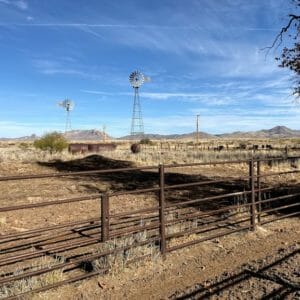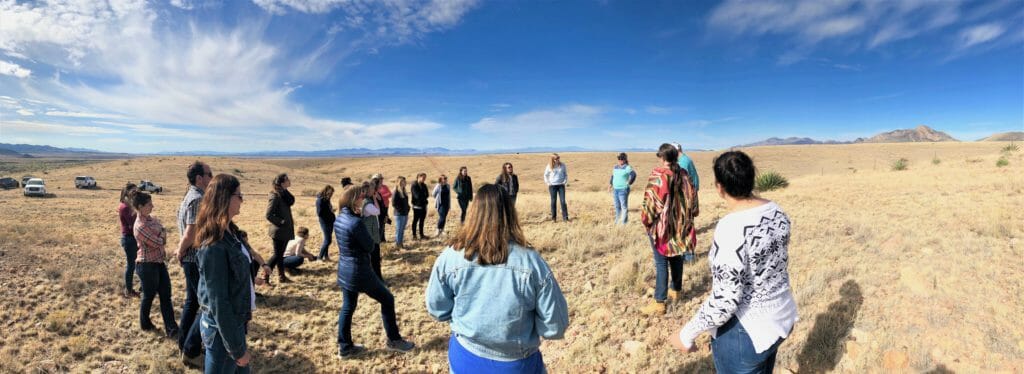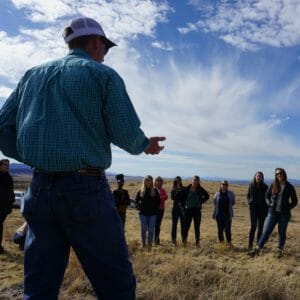This blog post was written by ASU graduate student Sarah Lemon. In addition to studying Food Policy and Sustainability Leadership at ASU, Sarah is a beginning rancher, who just finished a 9-month apprenticeship in sustainable livestock production at the Stone Barns Center for Food and Agriculture in the Hudson Valley of NY.
They say, “good fences, make good neighbors,” and while that may be true, I can say for certain that in Wilcox, Arizona, “good neighbors, make good fences” and other good choices that support sustainability. Nowhere is this more evident than at the C Bar Ranch where Tina Thompson and her family are hard at work raising angus beef cattle.
On a bright and crisp morning in December 2019, the ASU Food Policy and Sustainability Leadership cohort was welcomed to the C Bar Ranch as part of our week-long immersion trip through Arizona agriculture. Navigating to the ranch, which neighbors the Chiricahua National Monument, was no small feat.
Cell service is limited and the best directions are often based on a “look for the two windmills” kind of reference. But we persevered and were rewarded with a warm welcome from three generations of the Thompson family and the breath-taking beauty of the surrounding rangelands.
The ranch, homesteaded by Brannick and Mary Riggs in 1879, now boasts it’s 6th generation of ranchers making it one of the oldest continually operated family ranches in Arizona. Today, the Thompsons raise commercial cattle for the commodity beef market, as well as a registered breeding herd of Black Angus cattle.

To say the cattle are like family would be well put at C Bar and the Thompsons do everything in their power to give their animals the best lives possible and do so while taking care of the natural environment. The Thompsons have been proactive in embracing programs such as the Environmental Quality Incentives Program (EQIP) run through the National Resources Conservation Service (NRCS) of the US Department of Agriculture (USDA) to support their environmental stewardship. In particular, the Thompsons showed us a new water development project that not only allowed them to graze more effectively, but has also proven useful for the neighborhood wildlife. The family has been active in investigating new technologies such as an electronic water monitor, which sends an alarm to the their cell-phone if something is wrong, and optic-drone technology that will allow the Thompson’s to keep an even better eye on their miles and miles of good-neighborly fence lines.
Towards the end of our visit, one of the Swette Center students asked the Thompson family what they most wanted us to take away from our visit. “To understand that we love this land and these animals and are doing as much as we can to protect them,” was the crux of the response. Folks like the Thompsons, and other ranching families across the arid west, are often caught on the losing end of a system that promotes ever-increasing production no matter the cost to the producers or to the environment. Often, implementing a new sustainable practice is not economically feasible under the current system despite potential future benefits. However, as the Thompson family proudly demonstrates, when given the choice producers will do what they can to protect the environment and ensure that their way of life is available for generations to come.

On behalf of the entire ASU Food Policy and Sustainability Cohort, I would like to extend our sincere appreciation to the entire Thompson family for welcoming us to their home and giving us an opportunity to learn more about Arizona cattle production.
